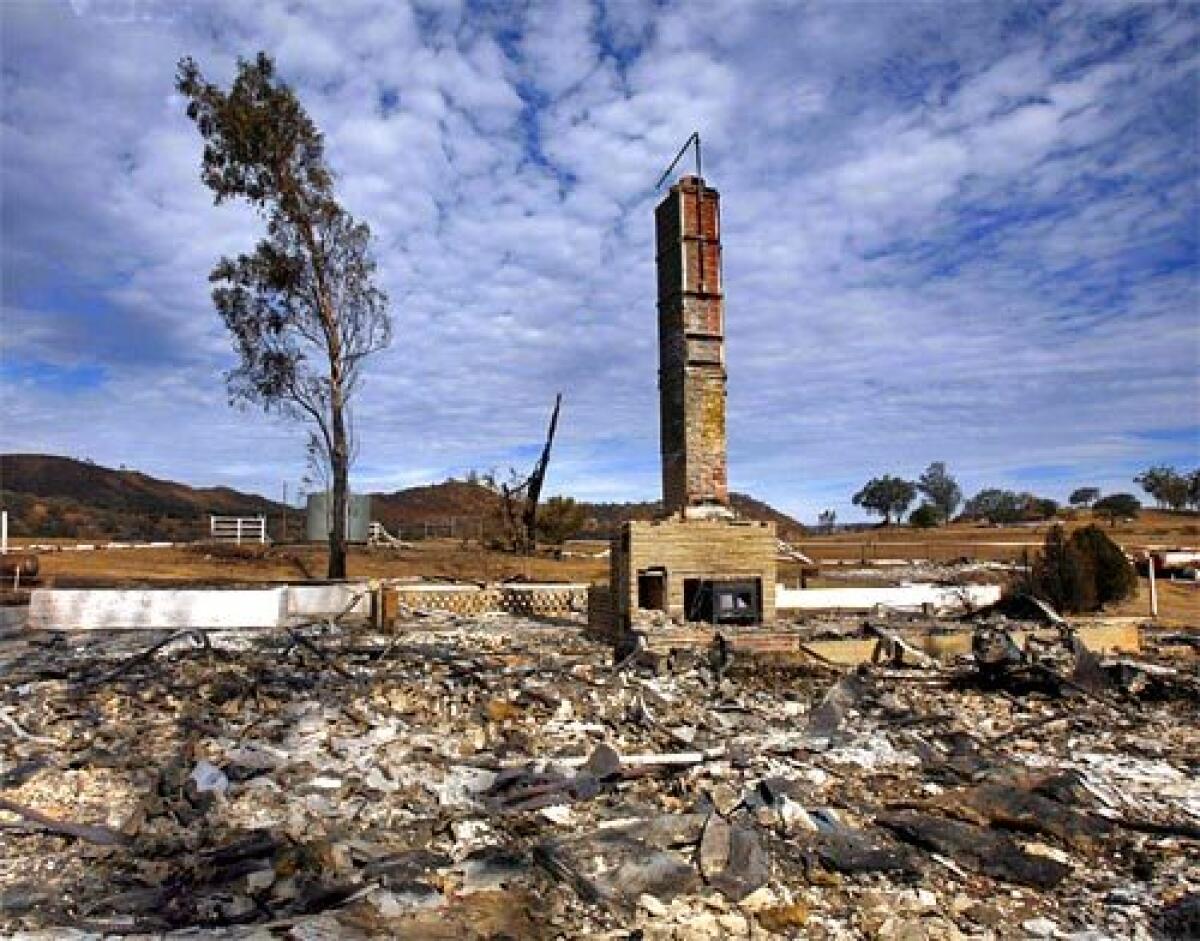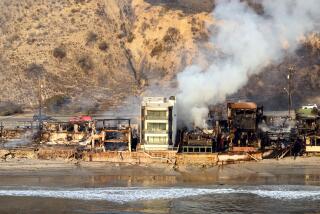Editorial: California leaders downplay the dangerous effects of sprawl during wildfires

- Share via
The devastating and deadly wildfires that swept across California were supposed to be a wake-up call that would finally force local governments to rethink new housing development in high-fire-risk areas.
From Redding to Santa Rosa to Ventura, suburban neighborhoods once thought to be fireproof were destroyed by fast-moving flames. Even new homes built to the most up-to-date standards were charred. Communities that thought they were safe from wildfire discovered that their notification systems, evacuation routes and preparations were woefully insufficient for these bigger, faster, more intense fires.
The implications were pretty clear: In an era when climate change was expected to fuel more frequent and more devastating wildfires, California would need to stop promoting residential sprawl and build denser developments closer to city centers if it hoped to save lives and protect property.
That’s why a fire chief in San Diego County raised eyebrows recently when, during a discussion of whether to allow the development of 1,119 homes on chaparral-covered land east of Chula Vista, he suggested that building new homes on the urban fringe could actually help stop the spread of wildfires.
According to the Desert Sun, Cal Fire San Diego County Unit Chief Tony Mecham’s startling comment came as he was taking questions from the San Diego County Board of Supervisors, whose members were considering approval of an upscale 1,284-acre development known as Adara at Otay Ranch. The site is prone to fires and most recently burned in the 2007 Harris fire.
Mecham predicted that the area would burn again. Still, he told the supervisors that the developer had addressed fire safety concerns. And, he said, modern homes surrounded by fire-resistant landscaping could stop the spread of fire — an assertion some fire experts said was dangerous. The Board of Supervisors approved the project.
The fire chief is right that new homes built with fire-resistant materials and surrounded by less flammable landscaping are safer than older homes. But fire resistant is not the same as fireproof. In the 2017 Thomas fire in Ventura County, newly built homes that met the strictest codes were destroyed. Just because newly constructed homes are safer doesn’t mean it’s safe — or a good idea — to keep putting them in areas known to burn.
Yet elected officials continue to approve massive housing developments in high-fire-risk areas.
Last year the Los Angeles County Board of Supervisors approved the Centennial development, a 19,000-home mini-city to be built at Tejon Ranch in a remote valley that’s been deemed at “high” (or “very high”) risk of wildfires. Between 1964 and 2015, state fire officials recorded 31 wildfires larger than 100 acres within five miles of Centennial, including four within the project’s boundaries.
Just like in San Diego, Los Angeles leaders said that their communities desperately need more housing. They argued that inherently dangerous locations could be made safer with fire-resistant construction and landscaping.
Developers have made equally disturbing arguments that their projects are making people safer by converting flammable grass and chaparral into “ignition-resistant landscapes.” By that logic, California can end wildfire risk altogether by paving the entire state.
To be sure, California has a debilitating housing shortage that is driving up rents and home prices, fueling an increase in homelessness and handicapping efforts to attract and retain businesses. Yet it should be clear by now that the old way of building — extending farther from the urban centers into high-fire-risk areas — is dangerous and counterproductive. It puts more people in harm’s way, including both residents and the firefighters tasked with protecting these new developments.
The threat is only going to grow as the effects of climate change intensify. Worse, remote developments increase the greenhouse gas emissions responsible for global warming. That’s because people who move to far-flung subdivisions generally have to commute longer distances to their jobs, and the developments themselves are often built for driving, rather than walking, biking or transit.
That’s one more reason why Californians have to make room for homes within their existing cities. The state can’t keep sprawling to solve the housing crisis.
More to Read
A cure for the common opinion
Get thought-provoking perspectives with our weekly newsletter.
You may occasionally receive promotional content from the Los Angeles Times.










